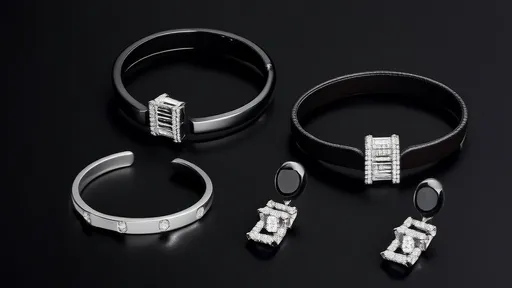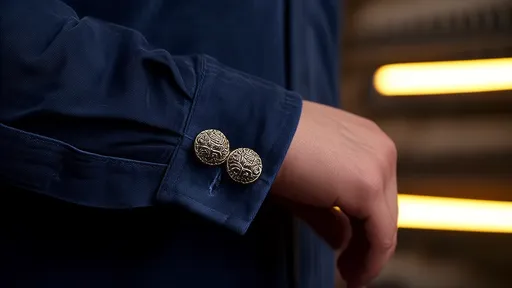The landscape of bespoke tailoring is undergoing a quiet revolution, one stitch at a time. For centuries, the craft of custom suiting was confined to the hushed, mahogany-paneled ateliers of Savile Row or the specialized sartorial hubs of Milan, accessible only to a discerning and affluent few. The process was intimate, time-consuming, and prohibitively expensive, creating an aura of exclusivity that, while prestigious, placed a formidable barrier between the average consumer and a perfectly fitted garment. This traditional model, however, is being fundamentally challenged and reshaped by a new paradigm: the online-to-offline (O2O) approach. This hybrid model, which leverages digital convenience for initial engagement before transitioning to crucial in-person craftsmanship, promises to democratize bespoke tailoring. But the critical question remains: is this modern fusion of technology and tradition a reliable path to a quality custom suit?
The allure of the O2O model is rooted in its elegant solution to the twin problems of accessibility and intimidation. The initial digital interface acts as a gentle, low-pressure introduction to the world of bespoke. Potential clients can peruse fabric swatches digitally, explore style options through interactive configurators, and schedule appointments at their leisure from the comfort of their homes. This eliminates the initial anxiety some might feel when walking into a traditional tailor's shop, a space that can sometimes feel imposing to the uninitiated. The online platform demystifies the first steps, allowing customers to arrive at their scheduled appointment already somewhat informed and with preliminary preferences in mind. This preparatory work streamlines the subsequent in-person consultation, making it more efficient and focused on the nuances of fit and personal interaction rather than on overwhelming basic choices.
Furthermore, the digital backbone of these businesses allows for unprecedented scalability and data management. A customer’s measurements, style preferences, and order history are meticulously stored in a digital profile. This creates a powerful database that ensures consistency for repeat orders and allows the company to offer personalized recommendations for future purchases, be it a new summer suit or a formal tuxedo. The efficiency gained from managing appointments, payments, and client communication online translates into operational cost savings. These savings can then be partially passed on to the consumer, making the bespoke experience more financially accessible than ever before without necessarily sacrificing the quality of materials offered. This economic aspect is a cornerstone of the model's "democratization" claim.
However, the model's reliability hinges almost entirely on the quality and integrity of its offline component. The digital front end is merely the gateway; the true product is delivered in the physical world. The most sophisticated website and seamless booking system are rendered meaningless if the subsequent tailoring is subpar. The critical moment of truth occurs during the fitting session. This is where the trained eye of a master cutter or a seasoned fitter is irreplaceable. They assess posture, shoulder slope, and other unique physical characteristics that a simple tape measure cannot fully capture. The reliability of an O2O service is directly proportional to the skill of these offline artisans. A company that invests in highly skilled tailors and fitters, often partnering with established workshops or bringing expertise in-house, builds a reputation for reliability. Conversely, one that prioritizes digital marketing over sartorial excellence will quickly be found out.
Another potential pitfall lies in the measurement process itself. Some ultra-lean O2O operations encourage customers to self-measure at home using provided guides. While convenient, this method is fraught with risk. An inaccurate self-measurement almost guarantees a poor fit, leading to customer dissatisfaction, costly returns, and alterations that negate the initial convenience and savings. The more reliable iterations of the model mandate an in-person meeting with a professional fitter, either in a branded showroom, a mobile tailoring truck, or through a network of traveling tailors who visit clients' offices or homes. This ensures that the foundational data—the measurements—are captured accurately by a trained professional, dramatically increasing the likelihood of a successful first garment.
The material and construction quality also play a decisive role in assessing reliability. A customer interacting primarily online must trust the company's representation of its fabrics and manufacturing standards. Reputable O2O tailors are transparent about their supply chain, often sourcing woolens from the same renowned mills (e.g., Vitale Barberis Canonico, Scabal, Loro Piana) used by traditional houses. They are also clear about the construction method—whether a suit is fully canvassed, half-canvassed, or fused—educating the customer on the implications for drape, durability, and breathability. This transparency builds trust. A lack of clear information online is a major red flag, suggesting potential compromises in quality that will become apparent only when the finished suit is delivered.
Ultimately, the reliability of the online-to-offline bespoke model is not a simple yes-or-no proposition. It is a spectrum. On one end, there are companies that have successfully integrated technology to enhance rather than replace the artisan tailor's role. They use digital tools for logistics and client management while preserving the sacred, hands-on craft of cutting, fitting, and constructing a garment. These companies offer a genuinely reliable and revolutionary service that makes bespoke tailoring more accessible. On the other end of the spectrum, there are businesses that are essentially made-to-measure operations with a slick website, lacking the necessary expert oversight and quality control, leading to inconsistent and disappointing results.
For the consumer, navigating this new landscape requires a degree of diligence. The reliability of a specific brand must be vetted through reviews, scrutiny of their process (e.g., Do they send a tailor? What are their fabric sources?), and an examination of their transparency. The promise of the O2O model is profound: marrying the convenience of the digital age with the timeless value of expert craftsmanship. When executed with a sincere commitment to quality at every stage—from the first click to the final stitch—it proves to be not just reliable, but a superior and welcome evolution in the world of custom apparel. It brings the art of the suit to a broader audience, ensuring that this sartorial tradition not only survives but thrives in the modern era.

By /Aug 21, 2025

By /Aug 21, 2025

By /Aug 21, 2025

By /Aug 21, 2025

By /Aug 21, 2025

By /Aug 21, 2025

By /Aug 21, 2025

By /Aug 21, 2025

By /Aug 21, 2025

By /Aug 21, 2025

By /Aug 21, 2025

By /Aug 21, 2025

By /Aug 21, 2025

By /Aug 21, 2025

By /Aug 21, 2025

By /Aug 21, 2025

By /Aug 21, 2025

By /Aug 21, 2025

By /Aug 21, 2025

By /Aug 21, 2025